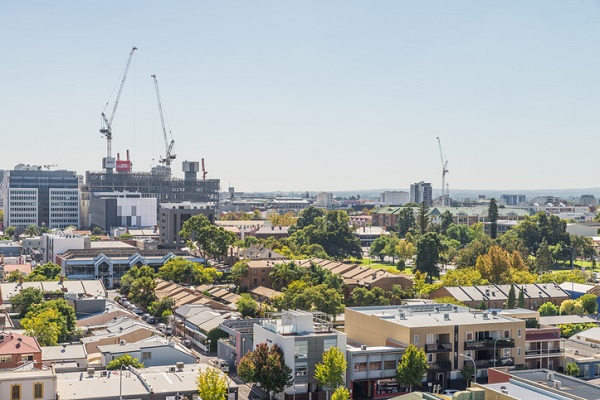Tradies hit the road under new scheme

Tradespeople can now move easier between states and territories with the Automatic Mutual Recognition scheme. Sean Carroll finds out how it works.
From 1 February 2022, licensed workers including builders, electricians and plumbers across Australia found it easier than ever to work in South Australia and Victoria, as exemptions under the Automatic Mutual Recognition of Occupational Registrations (AMR) scheme were removed.
Since then, the scheme has been put in place in New South Wales, Victoria, South Australia, Tasmania, the Australian Capital Territory and the Northern Territory, with Western Australia joining on 1 July 2022.
The scheme makes it easier for people to work across borders, all over the country. A historically difficult process, the change in regulations comes off the back of reports that this red tape was getting in the way of recovery efforts for bushfires, floods and other natural disasters, alongside people looking for work after the pandemic.
The AMR scheme removes the requirement for workers who hold a licence in their home state or territory to apply and pay for a second licence when carrying out the same activity in a different state or territory.
AMR is anticipated to add over $2.4 billion to the Australian economy over the next ten years and benefit more than 168,000 people each year. The scheme will cut red tape, do away with additional fees and paperwork and create a more mobile workforce to help businesses grow, enable workers to take up jobs and contribute to Australia’s economic recovery and resilience.
“They must, however, hold and maintain a registration or licence in their home state or territory that covers the work they intend to carry out in the second state or territory. Not all occupations and trades are eligible for the scheme and there are some additional requirements that tradespeople may be required to meet,” a government spokesperson explains.
Mutual recognition of occupations doesn’t mean someone can walk into another state and start working immediately, but it does allow a person who holds a registration or license in one state or territory to receive another registration or license for an equivalent occupation after they have notified the local registration authority.
Making use of the freedom of movement for the trades, the Queensland government recently launched the Tradies in Paradise campaign, inviting tradies from across Australia to the north to help flood-impacted communities rebuild and recover sooner while keeping the Queensland economy strong.
Queensland’s in-demand construction workforce is also set to benefit from a golden decade of growth and opportunity leading into the Brisbane 2032 Olympic and Paralympic Games, as well as the renewable energy boom.
To help inspire and attract up to 1,000 eligible construction trades and other building industry professionals, the Tradies in Paradise initiative includes interstate advertising and promotions, as well as an incentive scheme offering cash bonuses of up to $1,750.
“AMR is one of several measures the government is putting in place to help support the pipeline of skills and talent in the Australian workforce, to ensure people are able to move into secure jobs that are in demand, fill skills shortages and realise the opportunities of a recovering economy,” the spokesperson adds.
While the floodgates are opening and states are welcoming tradies with more open arms than before, there is still a bit of paperwork to run through.
Applications for the mutual recognition of any registration or license need to be made to the relevant registration authority in the state or territory where registration or license is being sought. As the mutual recognition of a registration or license is not instant, individuals must apply for recognition of their existing registration or license and pay any associated fees.
For example, a person who is licensed as an electrician in NSW and wishes to work in Victoria will need to lodge an application with the Victorian local registration authority to become registered in Victoria. The Victorian local registration authority will consider the NSW license and assess whether the person is eligible for an equivalent Victorian electrician’s license. If they determine the occupations are equivalent, the person can be registered and issued an electrician’s license in Victoria. The local registration authority may also place conditions on a license.
The AMR scheme is a huge step forwards for Australians, opening up freedom of movement for any working professional, including those in the building and construction industry.
Across the Trades readers may be interested to know that the Australian government has also recently introduced a new Australian Apprenticeships Incentive System (Incentives System). The $2.4 billion Incentives System commenced on 1 July 2022, and will build a more inclusive and sustainable economy, ensuring Australians receive quality training while in paid employment.
Support under the Incentives System focuses on priority occupations listed on the Australian Apprenticeships Priority List. This includes a Priority Wage Subsidy for employers of Australian Apprentices in priority occupations as well as direct payments to Australian Apprentices in priority occupations. A Hiring Incentive will also be available to employers taking on Australian Apprentices in occupations not on the Priority List. For more information about the new incentive system please visit this link.
